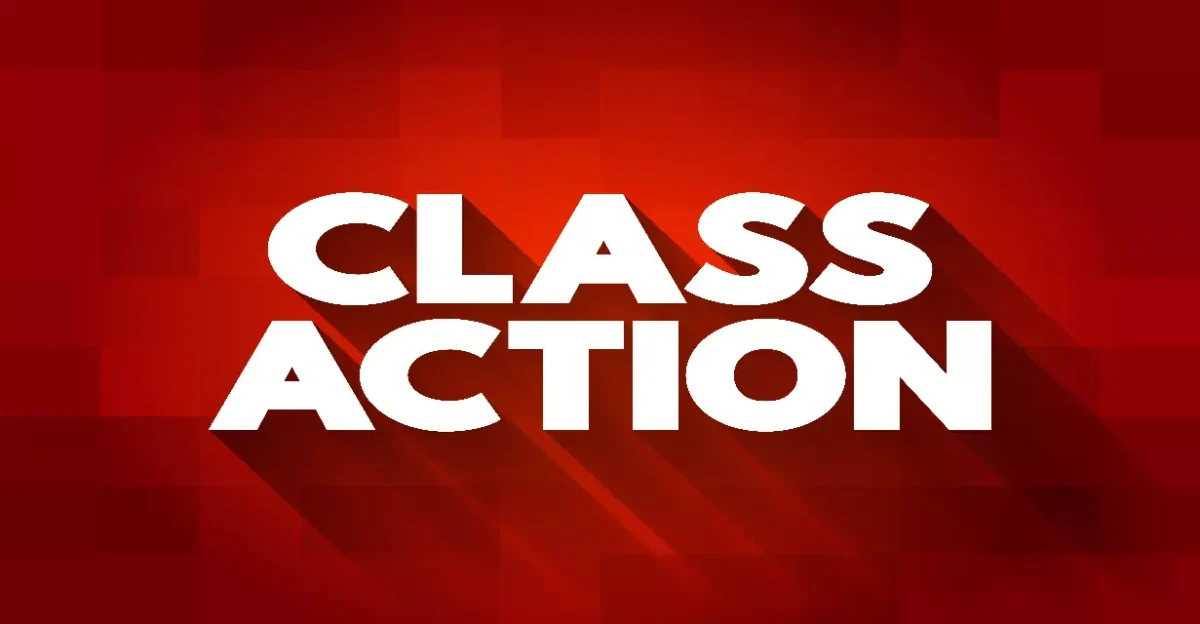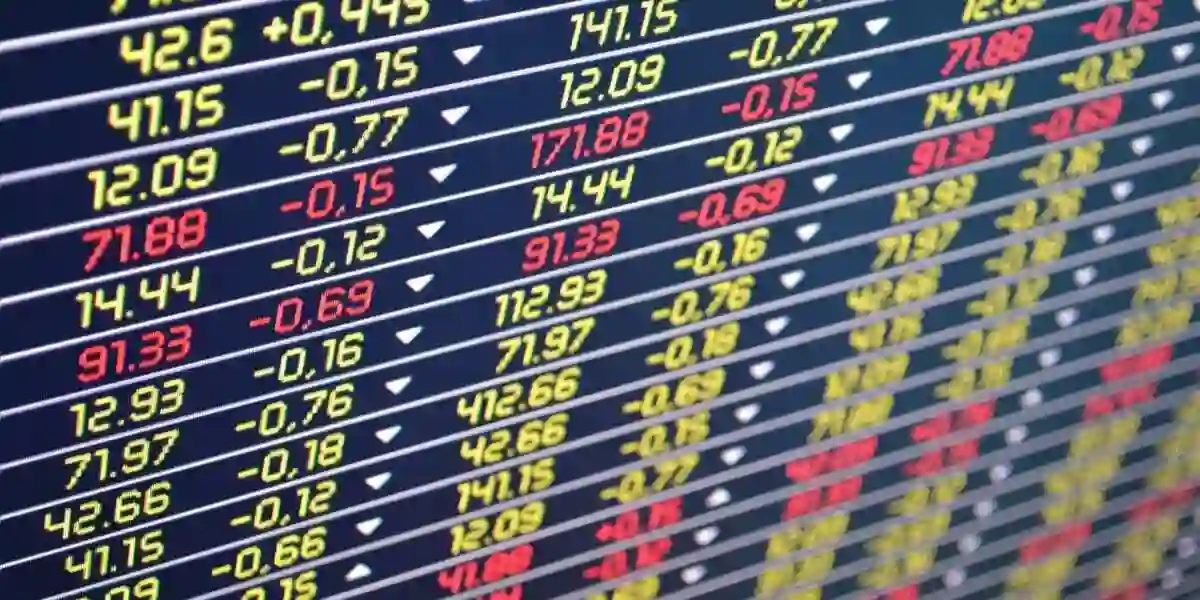Introduction to Class Certification in Securities Litigation
Class certification in securities litigation: Is a court’s formal process, governed by Federal Rule of Civil Procedure 23, to determine if a lawsuit can proceed as a class action.
Requirements: For certification, plaintiffs must show there are enough members to make a class viable, common questions of law or fact, that the representative plaintiffs’ claims are typical, and that class treatment is the best way to resolve the claims.
Critical Stage: This stage is crucial because if granted, the pressure to settle increases significantly; if denied, the case often ends.
The Purpose of Class Certification
- A Gatekeeper Stage: It is a critical hurdle for plaintiffs to overcome, and it’s often where a judge makes preliminary factual findings that can influence the case’s future.
- Determines Viability: If a case is not certified, it typically dies, whereas if it is, it continues as a class action with the potential for large damages if a verdict goes against the defendant.
Key Requirements Under Federal Rule of Civil Procedure 23
- Numerosity: The class must be so large that it is impractical to join all individual members.
- Commonality: There must be common questions of law or fact among the class members’ claims.
- Typicality: The claims of the representative parties must be typical of the claims of the class.
- Adequate Representation: The representative parties must adequately represent the interests of the class.
- Predominance (for Rule 23(b)(3) claims): Common issues must be more prevalent than individual issues, and a class action must be superior to other methods of resolving the case.
Specific Issues in Securities Class Actions
- Price Impact: A key battleground is whether the alleged misstatement or omission actually affected the security’s market price. Defendants can present evidence to show no “price impact,” which can defeat the presumption that the market price was affected, a presumption that is central to the plaintiffs’ case.
- Damages Methodology: Plaintiffs must propose a methodology, often an “event study,” to calculate damages that are common to the entire class, such as the price inflation caused by the misinformation and how it dissipated after corrective disclosures.
The Significance of Certification
- Settlement Pressure: When a court certifies a securities class action, it creates substantial pressure for the defendant to settle to avoid a potentially enormous jury verdict.
- The Merits of the Case: While not the final decision on the case’s merits, class certification allows the court to take a preliminary position and make factual findings that are crucial to the lawsuit’s progress, according to the Federal Judicial Center.

Understanding Class Certification in Securities Litigation
- Class certification represents the most pivotal juncture in securities litigation, functioning as the critical gateway that determines whether individual investor claims can proceed collectively against corporate defendants.
- Collective action: This procedural mechanism transforms scattered individual grievances into powerful collective actions, fundamentally altering the litigation landscape and creating substantial leverage for plaintiffs while exposing defendants to potentially catastrophic financial liability.
- The significance of class certification in securities litigation extends far beyond mere procedural convenience. When investors suffer losses due to accounting fraud or other securities violations, individual claims often prove economically unfeasible to pursue independently.
- Securities class actions provide the essential vehicle for aggregating these claims, creating sufficient economic incentive to challenge corporate misconduct and hold wrongdoers accountable for their actions.
The Legal Framework: Essential Requirements for Class Certification
- To achieve class certification, plaintiffs must satisfy stringent legal requirements that ensure the case is suitable for collective treatment. These requirements serve as protective mechanisms, balancing the efficiency benefits of class actions against the fundamental rights of individual parties.
- Common questions of law or fact represent the cornerstone requirement for class certification in securities litigation. In securities class actions, this typically involves demonstrating that all class members were harmed by the same alleged misrepresentations or omissions. For accounting fraud cases, this might include showing that all investors relied on the same materially misleading financial statements during the relevant time period.
- The superiority requirement demands that class action treatment be superior to other available methods for fairly and efficiently adjudicating the controversy. In securities litigation, this requirement is often easily satisfied because individual securities claims frequently involve relatively small damages that would be uneconomical to pursue separately.
- The superiority analysis considers factors such as the interest of class members in individually controlling their litigation, the extent of existing litigation, the desirability of concentrating litigation in a particular forum, and the likely difficulties in managing the class action.
- Ascertainability requires that the class be defined with sufficient precision that the court can determine who belongs in the class without extensive factual inquiries. In securities class actions, this typically involves defining the class by reference to specific time periods during which investors purchased or sold securities, making ascertainability relatively straightforward to establish.
- Adequacy: Evaluating Representation and Conflicts of Interest: Rule 23(a)(4) states that “the representative parties will fairly and adequately protect the interests of the class“. Courts use a two-part test that looks at class counsel’s qualifications and potential conflicts between class members. This becomes especially important in securities fraud cases where different types of investors might have conflicting interests. Courts look for absence of antagonism between the named plaintiff and other class members, and they want to see strong prosecution from both the named plaintiff and counsel.
- Superiority: Why Class Action Is the Preferred Legal Mechanism
- The second part of Rule 23(b)(3) states that “a class action is superior to other available methods for fairly and efficiently adjudicating the controversy”. Courts look at four key factors:
- Class members’ interests in controlling separate actions
- Extent of existing litigation on the controversy
- Desirability of concentrating claims in the particular forum
- Likely difficulties in managing the class action
- Class actions that meet superiority requirements will save time, effort, and money while promoting uniform decisions. The superiority might not exist when state laws vary widely or when cases need many individual inquiries.
- Daubert Standard for Admitting Expert Opinions: The Daubert standard makes courts act as gatekeepers to assess expert testimony’s reliability and relevance. Judges look at several factors: the methodology’s testability, peer review status, known error rates, operational standards, and acceptance in scientific communities. Many circuits now require a complete Daubert analysis at class certification when expert evidence plays a key role in certification decisions.
The Fraud-on-the-Market Theory: Presuming Reliance in Securities Cases
- The Fraud-on-the-Market Theory serves as a crucial foundation for most modern securities class actions, particularly those involving publicly traded securities. This legal doctrine presumes that investors rely on the integrity of market prices when making investment decisions, eliminating the need for individual proof of reliance on specific misrepresentations.
- Under the Fraud-on-the-Market Theory, courts presume that material misrepresentations or omissions affect the market price of securities, and that investors who purchase or sell at the market price rely on these distorted prices. This presumption proves essential for class certification because it establishes the common questions of law or fact necessary for collective treatment.
- The theory operates on several key assumptions: that markets for publicly traded securities are efficient, that material information affects stock prices, and that investors rely on market prices as reflections of a security’s value. When companies engage in accounting fraud or other deceptive practices, these misrepresentations allegedly distort market prices, creating artificial inflation that harms investors when the truth eventually emerges through corrective disclosures.
- Predominance: Proving Common Issues Outweigh Individual Ones: The fraud-on-the-market theory often determines predominance in securities fraud litigation. This theory creates a reliance presumption for securities traded in efficient markets. Individual damage calculations usually don’t stop certification. However, the Ninth Circuit’s recent ruling in Bowerman v. Field Asset Services, Inc. found class certification might not work when individual inquiries determine if damages exist, rather than just calculating them.
- Evidentiary Burden and Use of Expert Testimony: Securities class action litigation relies heavily on expert testimony, especially during certification. Courts now depend more on specialized financial and economic evidence to determine if class certification requirements are met.
- Market Efficiency Analysis in Fraud-on-the-Market Theory: The fraud-on-the-market theory stands at the heart of securities class actions. This theory depends on showing market efficiency. Courts use a five-factor test from Cammer v. Bloom to review market efficiency. The fifth factor requires expert testimony to show cause-and-effect relationships between corporate events and stock prices. This framework assumes efficient markets make stock prices adjust faster to public information without bias. Market participants can then trust the market’s price integrity rather than specific misstatements.
Materiality: The Cornerstone of Securities Fraud Claims
- Materiality represents a fundamental element that must be established in securities class actions involving accounting fraud or other disclosure violations. Information is considered material if there is a substantial likelihood that a reasonable investor would consider it important in making an investment decision, or if the information would significantly alter the total mix of available information.
- In accounting fraud cases, materiality often involves demonstrating that the misrepresented financial information was significant enough to influence investor decisions. This might include showing that the fraud involved substantial amounts relative to the company’s financial position, that it affected key financial metrics that investors typically focus on, or that it concealed significant business problems or trends.
- The materiality analysis becomes particularly complex in cases involving accounting fraud because courts must determine whether the specific accounting irregularities were significant enough to mislead reasonable investors. Factors considered include the magnitude of the misstatements, their impact on financial trends, their effect on key ratios and metrics, and whether they masked fundamental business problems.
Loss Causation: Connecting Fraud to Financial Harm
- Loss causation represents one of the most challenging elements to establish in securities class actions, requiring plaintiffs to demonstrate that their financial losses were caused by the alleged fraud rather than other market factors. This requirement ensures that defendants are held liable only for losses actually attributable to their misconduct.
- In accounting fraud cases, loss causation typically requires showing that stock price declines occurred when the truth about the fraudulent conduct was revealed to the market through corrective disclosures. These disclosures might come through company announcements, regulatory investigations, analyst reports, or other sources that reveal the previously concealed information.
- The loss causation analysis becomes particularly complex because stock prices fluctuate for numerous reasons unrelated to any alleged fraud. Plaintiffs must isolate the portion of their losses attributable to the fraud from losses caused by general market conditions, industry trends, company-specific factors unrelated to the fraud, or other intervening events.
CIRCUIT-BY-CIRCUIT ANALYST OF LOSS CAUSATION STANDARD
Circuit | Summary of pleading standard | Key cases | Notes and circuit splits |
| First Circuit | Applies a relatively lenient standard under Rule 8(a), requiring only plausible allegations that connect the corrective disclosure to the preceding misrepresentation. | Massachusetts Retirement Systems v. CVS Caremark Corp. (2013). | Stands with circuits requiring only “plausible” allegations rather than particularity. |
| Second Circuit | Requires plaintiffs to allege that the subject of the fraudulent statement was the cause of the actual loss suffered. Does not require particularized pleading. | Lentell v. Merrill Lynch & Co. (2005); Emergent Capital Inv. Mgmt., LLC v. Stonepath Grp., Inc. (2003). | Focuses on “zone of risk” analysis and requires that the misstatement concerns the very facts that caused the loss. |
| Third Circuit | Follows a moderate approach under Rule 8(a), requiring a causal connection between the misrepresentation and the loss that is more than merely possible or speculative. | McCabe v. Ernst & Young, LLP (2007); EP Medsystems, Inc. v. EchoCath, Inc. (2000). | Requires plaintiffs to demonstrate that the revelation of fraudulent information was a “substantial factor” in causing the decline in stock value. |
| Fourth Circuit | Applies the heightened Rule 9(b) pleading standard to loss causation, requiring plaintiffs to plead with particularity how the corrective disclosure relates to the prior misrepresentation. | Katyle v. Penn National Gaming, Inc. (2011); Teachers’ Ret. Sys. of LA v. Hunter (2007). | Stands with the Seventh and Ninth Circuits in requiring particularized pleading of loss causation. |
| Fifth Circuit | Requires that plaintiffs allege both that the corrective disclosure specifically revealed the fraud and that the revelation of the fraud caused the loss. | Pub. Emps. Ret. Sys. of Miss. v. Amedisys, Inc. (2014); Lormand v. US Unwired, Inc. (2009). | Particularly stringent about the connection between corrective disclosure and prior misrepresentation. |
| Sixth Circuit | Follows a moderate approach, requiring plaintiffs to demonstrate a causal connection between the misrepresentation and the loss, but not requiring the heightened particularity of Rule 9(b). | Ohio Pub. Emps. Ret. Sys. v. Federal Home Loan Mortgage Corp. (2016); IBEW Local 58 v. Royal Bank of Scotland (2013). | Focuses on whether the disclosure revealed “some aspect” of the prior misrepresentation. |
| Seventh Circuit | Applies the heightened Rule 9(b) pleading standard to all elements of securities fraud, including loss causation. | Tricontinental Industries v. PricewaterhouseCoopers (2007); Ray v. Citigroup Global Markets (2007). | Stands with the Fourth and Ninth Circuits in requiring particularized pleading of loss causation. |
| Eighth Circuit | Applies a relatively lenient standard, requiring only that the complaint provide the defendant with notice of the plaintiff’s claim that the misrepresentation caused the loss. | In re Cerner Corp. Sec. Litig. (2005); Schaaf v. Residential Funding Corp. (2008). | Tends to analyze loss causation under the more permissive Rule 8(a) standard. |
| Ninth Circuit | Applies the heightened Rule 9(b) pleading standard to all elements of securities fraud, including loss causation. | Oregon Public Employees Retirement Fund v. Apollo Group Inc. (2014); Metzler Inv. GMBH v. Corinthian Colleges, Inc. (2008). | Previously inconsistent but firmly established Rule 9(b) standard in Oregon Public Employees v. Apollo (2014). |
| Tenth Circuit | Applies a moderate approach that requires a logical link between the misrepresentation and the economic loss, but does not explicitly require Rule 9(b) particularity. | In re Williams Sec. Litig. (2007); Nakkhumpun v. Taylor (2015). | Focuses on whether the disclosure revealed “some aspect” of the prior misrepresentation. |
| Eleventh Circuit | Requires plaintiffs to plead that the misrepresentation was the “substantial or significant contributing factor” in the loss, but generally follows Rule 8(a). | Hubbard v. BankAtlantic Bancorp, Inc. (2012); FindWhat Investor Group v. FindWhat.com (2011). | Emphasizes proximate causation principles in loss causation analysis. |
| D.C. Circuit | Has limited securities fraud jurisprudence but generally follows a more lenient approach aligned with Rule 8(a). | Plumbers & Steamfitters Local 773 Pension Fund v. Danske Bank (2020). | Generally follows the Supreme Court’s guidance in Dura Pharmaceuticals without imposing heightened pleading requirements. |
The Use of Event Studies in Securities Litigation
- Event studies have become indispensable tools in modern securities litigation, providing sophisticated statistical analysis to measure the impact of specific events on stock prices. These studies help establish both materiality and loss causation by isolating the market’s reaction to particular disclosures from other factors affecting stock prices.
- Use of event studies in securities class actions typically involves examining stock price movements around key dates, such as when allegedly fraudulent information was disclosed or when corrective information was revealed. By comparing actual stock price movements to expected movements based on market and industry factors, event studies can help quantify the impact of specific disclosures.
- In accounting fraud cases, event studies might examine stock price reactions to earnings announcements, restatements, regulatory investigations, or other events that revealed or suggested accounting irregularities. These studies provide crucial evidence for establishing that the alleged fraud actually affected stock prices and caused investor losses.
- The methodology behind event studies involves sophisticated statistical techniques that control for market-wide movements, industry trends, and company-specific factors unrelated to the alleged fraud. This analysis helps courts and juries understand the complex relationship between corporate disclosures and stock price movements in efficient markets.

Strategic Implications for Litigation Parties
- The class certification decision fundamentally alters the strategic landscape for both plaintiffs and defendants in securities litigation. For plaintiffs, successful class certification creates substantial leverage in settlement negotiations and provides access to resources necessary to pursue complex accounting fraud cases against well-funded corporate defendants.
- Defendants facing potential class certification must carefully evaluate their exposure, considering not only the merits of the underlying claims but also the potential magnitude of class-wide damages. The aggregation of individual claims through class certification can transform manageable individual disputes into company-threatening litigation with potential damages in the hundreds of millions or even billions of dollars.
- Securities class actions involving accounting fraud present particular challenges for defendants because these cases often involve extensive document discovery, complex expert testimony, and detailed analysis of financial records and accounting practices. The costs of defending such litigation can be substantial even when the underlying claims lack merit.
Role of the Lead Plaintiff Under the PSLRA
- Lead Plaintiff Role: The Private Securities Litigation Reform Act (PSLRA) altered the map of securities class action procedure by creating a formal lead plaintiff selection process. The court must appoint the “most adequate plaintiff” as lead plaintiff – usually the person or group that has the largest financial stake in the outcome. This presumption can only be overturned if proof shows the presumptively most adequate plaintiff cannot fairly represent the class or faces unique defenses.
- Lead Plaintiff Responsibilities: Lead plaintiffs must handle several key responsibilities. They need to file a sworn certification that confirms they reviewed and authorized the complaint. The certification must state they did not buy securities because their counsel told them to. They must be willing to serve as representative and provide details of their relevant transactions. They also need to list other actions where they wanted to be lead plaintiff and confirm they will not take payment beyond their pro rata share.
Evolving Standards and Future Considerations
- The landscape of class certification in securities litigation continues to evolve as courts refine their approach to emerging issues and new forms of corporate misconduct. Recent developments have focused on tightening the standards for class certification, requiring more rigorous analysis of whether class treatment is appropriate and whether the proposed class satisfies all necessary requirements.
- Courts are increasingly scrutinizing the Fraud-on-the-Market Theory and requiring more sophisticated analysis of market efficiency and the relationship between alleged misrepresentations and stock price movements. This trend reflects growing judicial awareness of market complexity and the need for more precise analysis of causation in securities class actions.
- The integration of advanced statistical methods and event studies into securities litigation has enhanced the precision of damage calculations and causation analysis, but has also increased the complexity and cost of these cases. As analytical methods become more sophisticated, courts must balance the benefits of more precise analysis against the practical considerations of case management and jury comprehension.
- Class certification in securities litigation remains a dynamic area of law that continues to evolve in response to changing market conditions, new forms of corporate misconduct, and developing legal standards. The intersection of complex financial markets, sophisticated analytical methods, and fundamental principles of procedural fairness ensures that this area will continue to present challenging issues for courts, practitioners, and market participants.
- The stakes involved in class certification decisions—both for individual investors seeking redress and for corporations facing potential liability—underscore the critical importance of understanding these complex legal and procedural requirements.
- As securities class actions continue to serve as a primary mechanism for enforcing securities laws and protecting investor interests, the class certification process will remain a crucial battleground where the rights of investors and the responsibilities of corporations are defined and enforced.
Frequently Asked Questions about Class Certification in Securities Class Action Litigation
- Q1. What are the key requirements for certifying securities class action lawsuits? To certify a securities class action lawsuit, plaintiffs must meet Rule 23(a) prerequisites: numerosity, commonality, typicality, and adequacy. They must also satisfy Rule 23(b)(3) requirements of predominance and superiority, demonstrating that common issues outweigh individual ones and that a class action is the most efficient method to resolve the dispute.
- Q2. How many plaintiffs are typically needed to meet class certification requirements? While there is no strict numerical threshold, courts generally find the numerosity requirement satisfied when there are 40 or more class members. However, in securities fraud cases involving publicly traded companies, this requirement is often easily met due to the large number of shareholders.
- Q3. What role does expert testimony play in securities class action certification? Expert testimony is crucial in securities class actions, particularly for demonstrating market efficiency, analyzing loss causation, and conducting event studies. Courts rely heavily on expert analysis to assess whether the certification requirement requirements have been met, especially in proving the fraud-on-the-market theory and evaluating price impact.
- Q4. How does the Private Securities Litigation Reform Act (PSLRA) affect the lead plaintiff selection process? The PSLRA established a formal lead plaintiff selection process in securities class action litigation. Courts must appoint the “most adequate plaintiff,” presumptively the person or group with the largest financial interest in the relief sought. This lead plaintiff bears significant responsibilities, including filing a sworn certification and demonstrating their ability to fairly represent the class.
- Q5. What strategies do defendants commonly use to challenge class certification requirements in securities cases? Defendants often focus on undermining the predominance requirement by highlighting individualized issues among class members. Common tactics include demonstrating the named plaintiff’s atypical circumstances, gathering evidence of differing experiences among class members, challenging proposed damages models, and retaining experts to counter plaintiffs’ market efficiency or price impact analyzes.
Contact Timothy L. Miles Today for a Free Case Evaluation
If you suffered substantial losses and wish to serve as lead plaintiff in a securities class action, or have questions about securities class action settlements, or just general questions about your rights as a shareholder, please contact attorney Timothy L. Miles of the Law Offices of Timothy L. Miles, at no cost, by calling 855/846-6529 or via e-mail at [email protected]. (24/7/365).
Timothy L. Miles, Esq.
Law Offices of Timothy L. Miles
Tapestry at Brentwood Town Center
300 Centerview Dr. #247
Mailbox #1091
Brentwood,TN 37027
Phone: (855) Tim-MLaw (855-846-6529)
Email: [email protected]
Website: www.classactionlawyertn.com
Facebook Linkedin Pinterest youtube
Visit Our Extensive Investor Hub: Learning for Informed Investors







